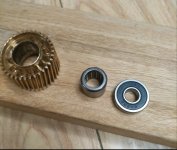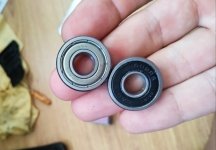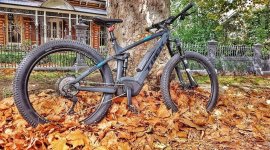Just wanted to share my experience this morning on the first ride in to work after I had calibrated the torque sensor using the new firmware.
The bike is very responsive in fact it doesn't feel like the old bike at all
I am now riding in Level 2 and I was able to back off the main power to 300 W max and happily rode in most of the way at around 200W and 32km/hr with not too much effort. When starting off and with some headwind it would go to 280W but not for long
I kept a good eye on my cadence with was between 60 and 67 most of the time
Pushing a little harder I could ride at 75-78 cadence and it felt really comfortable. Easy to change gears by just backing off the torque a little bit, you don’t need to stop pedalling.
In fact the old firmware would feel like you are hitting a brick wall the faster you peddle but with this firmware it feels like a breath of fresh air. The faster you want to go the more it helps you. (Update the cadence did top out at just over 80 for my 36v motor with 39v but I wouldn’t have hit 80 without trying hard)
When I got right near the end and still had some battery left I pumped the power up to 550W and was able to ride comfortably at 38km/hr with little effort. I would not have been able to do this with the old firmware with a battery that was so low.
What could be improved...
So I kept my feet off the pedals or had pedals in 6-12oclock position when stopped at lights so that the motor would not engage. It’s not that big a deal when you get used to it although it would be nice if I had cutoff brakes installed.
I felt like it was too sensitive sometimes as it did not require me to press hard before it gave max assist. I thought if I could bump up the max torque setting just a little it would be a little more natural. This is pretty easy to do.
At very lower power and cadence at the start of my journey I experienced some weird noises from the motor, almost like a resonance or electrical noise. I could not figure out what it was but it went away and did not come back again ?? Weird. This did not happen on my way home.
On the whole I'm pretty happy and have to thank casainho and all that have contributed to this awesome project





